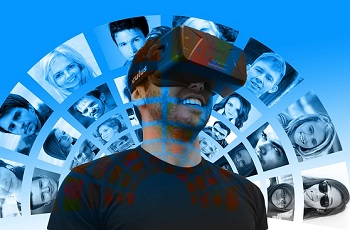The Use of Virtual Reality to Treat Addiction

Virtual Reality is increasingly becoming a popular way to treat a host of mental health issues.
Some of the mental issues that virtual Reality is being associated with include anxiety, addiction, and Post-traumatic stress disorder.
As a method of treatment for addiction, Virtual reality is helping people to develop resistance to alcohol through role play.
For example, an addict is ushered into a virtual bar, shooting galleries or crack houses. This is being done through technology by the use of Google Street View. In some cases, the patients can be directed to the kind of location they visit to access their vice.
In order for patients to be more receptive to this type of treatment, special headsets are being used as well as state of the art imagery generated by computers. This is making the scenario more realistic for the patient.
Dr. Patrick Bordnick, who is a professor at Tulane University, has been studying the use of VR therapy in addiction extensively. He says that finding the right equipment that is both cheap and works well, was an astounding breakthrough.
According to recent studies, mental health problems are quite prevalent. In fact, it has been estimated that 1 in every 5 people is suffering from a mental health-related condition. However, these patients are not getting the much-needed treatment due to different reasons. Some of these reasons include their location, limited finances and the stigma associated with mental problems. Researchers who have been actively looking into Virtual Reality Therapy found out that, it can be as effective the widely used traditional methods.
One of the techniques used in VR, known Exposure Therapy, works by exposing the patient to trauma induced situations. For instance, if you have a phobia of being in a crowd, this method seeks to put you in the middle of the crowd virtually, so that you can develop the required resilience.
One of the reasons as to why virtual Reality is groundbreaking is that it has the capability to simulate the scenarios that are difficult to encounter in real life situations. Some of the common anxiety disorder is triggered by being in certain locations, it is, therefore, imperative to be able to recreate them for treatment purposes. Furthermore, bypassing Geographical barriers makes Virtual Reality unique.
Moreover, with the use of a headset, it is possible to treat fear of heights, crowds, flying, animals as well as other common phobias. Normally, a therapist monitors patterns of the condition. Once the critical moments have been identified, the patient can be helped to ease some of the anxiety successfully.
According to Dr. Bordnick, it is important that this technology works seamlessly for both the patient and the therapist. There has been a rise of new starts ups in Virtual Reality treatment. The new companies are attempting to combine technology with clinical research in order to build VR systems and Kits. One of the startups in Palo Alto, Limbix, uses immersive virtual reality kits to alleviate trauma, anxiety and other mental related conditions.
One of the practitioners at Limbix, Dr. Sean Sullivan who is a clinical psychologist as well as the Director of Psychology at the center, says that a realistic VR experience can elevate the therapeutic experience to such point that it can replace traditional methods. In addition, Dr. Sullivan pointed out that in clinical practices, Virtual Reality is actually taking the place of exposure therapy. This is also known as Imaginal exposure in mainstream treatment. Rather than asking a patient to close her eyes and imagine the feared stimuli, it is possible to put them, right into that environment by the use of Virtual Reality, Dr. Sullivan added.
For P.T.S.D patients, VR can be used to treat veterans. Recreating the actual experiences is important for treatment purposes. The equipment at Limbix includes a state of the art 360 degrees real- world panoramic imagery to recreate the necessary scenarios. Sometimes, the situation forces the people responsible for creating this virtual reality to go to where the patient experienced the tragic event. This is likely to happen with P.T.S.D patients, concluded Dr. Sullivan.
However, experts caution that more awareness needs to be created in the Virtual Reality space, in order to make it the ultimate mental health solution.









